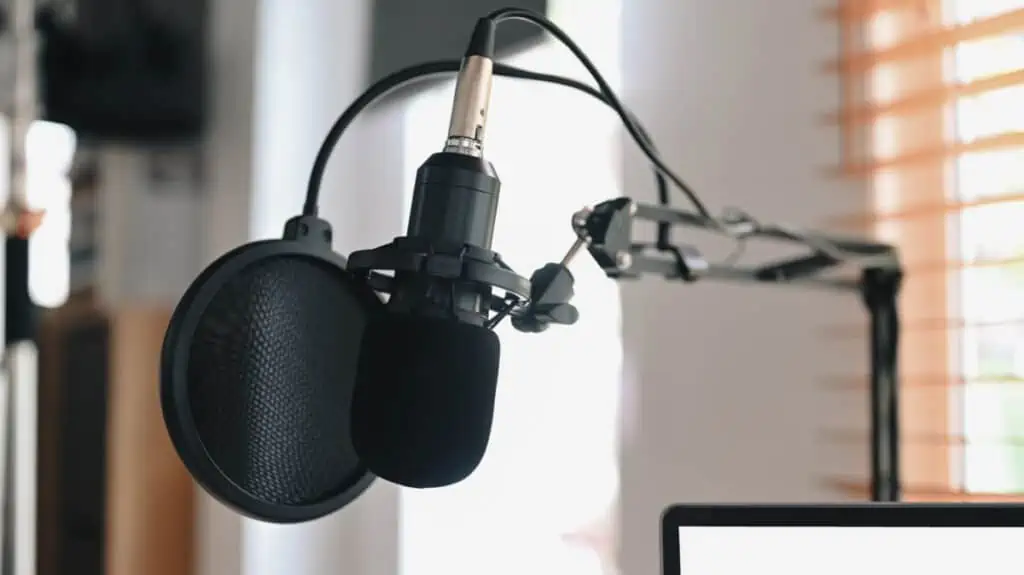Table Of Contents
In the world of podcasting, having accessible content is essential for reaching a wider audience, and that’s where podcast transcripts come into play.
Transcripts not only make your podcast more accessible to those who are deaf, hard of hearing, or prefer reading but also enhance your content’s discoverability, improving your podcast’s SEO.
So, how do we go about getting podcast transcripts for our episodes?
Various methods and tools are available to create accurate podcast transcripts, from DIY approaches to automated transcription services.
Using a service like Castmagic can make the process seamless, allowing podcasters to focus on creating quality content while ensuring accessibility for their audience.
By providing podcast transcript solutions, we enhance the user experience, open up new opportunities for sharing and repurposing content, and ultimately grow our podcast’s reach.

How To Get Podcast Transcripts: Methods for Transcribing Podcasts
1. Manual Transcription
One way of creating podcast transcripts is through manual transcription. This involves listening to the podcast episode and writing down the words verbatim.
By doing this ourselves, we have complete control over the transcription quality, but it can be time-consuming.
Another option is to hire a professional transcriptionist or use a transcription service, like Ditto Transcripts, which offers a 99% accuracy guarantee.
2. Automatic Transcription Services
For a faster and more affordable solution, we could use automatic transcription services that rely on AI technology.
Some popular tools that can handle both audio file and video file transcriptions are Rev, Airgram, and Descript. These services usually provide an efficient and cost-effective way to create podcast transcripts.
- Rev: Offers quick turnaround times and reasonable pricing.
- Airgram: Utilizes AI technology to generate transcripts automatically.
- Descript: Provides editing tools to refine the generated transcripts.
How do they work? Most of these services allow you to upload your podcast’s audio file or video file and will then generate a transcript within a specified timeframe. Remember to consider factors such as budget, time constraints, and quality expectations when choosing a method for transcribing your podcast.

Using Speech-to-Text Tools
When transcribing podcasts, several easy-to-use speech-to-text tools can make the process more efficient.
Here are a few of our favorite tools:
1. Google Docs Voice Typing
First, let us introduce Google Docs Voice Typing. This tool is built into Google Docs, making it a readily accessible option for many users. How does it work? Open a new document in Google Docs, click “Tools” in the toolbar, and select “Voice typing.” This will enable a microphone icon, which you can click to start voice recognition. It will then transcribe whatever audio it hears into the document.
Remember that this feature works best with clear and articulate speech, so having high-quality audio from your podcast can improve the accuracy of the transcription. Afterward, you can review the text to make necessary edits or adjustments.
2. Otter.ai
Another option is Otter.ai, an AI-powered transcription service that can process audio or video files. To use Otter.ai:
- Upload your podcast audio or video file to the website.
- Wait for the transcription to complete.
- Review the generated text for accuracy, and edit as needed.
This tool offers a free tier allowing up to 600 minutes of transcription per month, which may be sufficient for some podcasters. Upgrade to a paid plan for increased transcription limits and additional features.
3. Other Speech to Text Tools
There are numerous other speech-to-text tools available that can help transcribe podcasts.
Some popular choices include:
- Temi: Offers automated transcription services at a per-minute rate.
- Descript: Combines transcription, editing, and collaboration features in one platform.
- Trint: Provides an automated transcription service with the option for human transcription at an additional cost.
Selecting the right tool for your needs depends on the level of accuracy you require, your budget, and other factors. It’s essential to weigh the pros and cons of each before deciding which suits your specific requirements.

Transcribing with Automatic Transcription Services
This section will discuss how to transcribe your podcast using automatic transcription services. We will explore free and paid options to help you generate transcripts efficiently.
1. Free Options
Several free automatic transcription services are available to help you transcribe your podcast. Some popular options include:
- Otter.ai: With a free plan, Otter.ai offers 300 minutes of transcription per month.
- Happy Scribe: Happy Scribe allows you to transcribe a few files per month for free.
- Sonix: This service provides 30 minutes of free transcription to new users.
Note: Free options may have limitations in terms of accuracy and functionality.
2. Paid Options
Consider using paid automatic transcription services if you require a more accurate transcription. Some reliable options are:
- Podcastle: An AI-powered platform, Podcastle offers effortless podcast transcription services.
- Rev: A popular podcaster choice, Rev provides transcription services starting at $1 – $1.25 per minute.
- Castos: If you host your podcast on Castos, their transcription service automatically transcribes each episode.
- Castmagic: A podcasting platform, Castmagic can provide transcription services via integration with existing transcription providers.
Paid options typically provide better accuracy, faster turnaround times, and additional features.
To transcribe your podcast using these services, simply upload your podcast audio file or provide a public URL to the episode. Then, the service will process the audio and generate a transcript for you.
Remember to review and edit the transcript as needed, as automatic transcriptions may not be 100% accurate. Good luck with your podcast transcriptions!

Adding Transcript to Your Podcast Episode
An essential step in improving your podcast’s accessibility and search engine optimization (SEO) is by adding transcripts for each episode.
This section will discuss different ways to create and embed transcripts into your podcast episodes.
Embedding the Transcript
To make your episode transcripts easily accessible to listeners, you can include them directly on your podcast’s website. Users often appreciate plain text or HTML formats, which can be seamlessly integrated with your podcast’s show notes.
There are multiple ways to create transcripts for your podcast episodes:
- Self-writing: We can listen to the episode and write down the script ourselves, ensuring high accuracy and control over the content.
- Podcast transcriber services: We can employ professional transcribers, such as Rev, who can generate a written copy for a fee.
- Automatic transcription tools: We can use software like Descript to transcribe podcast audio into text automatically.
Once the transcript is ready, it’s essential to mention it in the podcast intro, so users accessing the episode through apps can be aware of its availability. Formatting options, such as tables and bullet points, can be used to enhance readability and presentation.
Remember, providing transcripts benefits podcast listeners and boosts your podcast’s online visibility through improved SEO.

Promoting Your Transcripts
This section will discuss the best practices for promoting your podcast transcripts to increase visibility and attract a wider audience. Remember that promoting transcripts not only helps with accessibility but also boosts your search engine optimization (SEO) efforts.
Social media is one of the most effective ways to promote your transcripts. Share relevant snippets or quotes from your transcripts on Twitter, Facebook, and LinkedIn platforms. Ensure to provide a link to the full transcript, appropriate hashtags, and mentions of your podcast’s title or subject matter. Is there a particularly insightful or catchy quote from your latest podcast episode?
Consider using the following methods for promoting your transcripts:
- Blog posts: Publish a blog post summarizing the episode and including key takeaways from the transcript. Embed or link to the transcript in the post for those who prefer to read or who require the text for accessibility reasons.
- Email newsletters: Incorporate transcript highlights or links within your regular newsletter. This will keep subscribers engaged and informed.
- Community forums: Share your transcripts or relevant parts of them on topical forums or discussion boards where your target audience is active.
Additionally, you can leverage the power of accessible transcripts by collaborating with influencers or other podcasters in your niche. Reach out to potential partners, highlighting the added value that your transcripts can offer to their followers. What cross-promotional opportunities can you explore to boost your transcript’s visibility?
With a strategic approach to promoting your transcripts, you can maximize the benefits and draw attention to your podcast, ultimately growing your listenership and expanding your reach.

Why Transcribe Podcasts?
1. Search Engine Optimization
Transcribing podcasts is crucial for Search Engine Optimization (SEO). Since search engines like Google cannot listen to audio files, transcribing your podcast episodes into text allows them to be indexed and ranked.
How does this help your podcast? Increasing its visibility on search engine results pages helps drive more traffic to your content. Moreover, including keywords in your transcript further enhances your podcast’s discoverability on search engines and social media platforms.
2. Accessibility
Another key reason to transcribe podcasts is to make your content more accessible. Transcripts open up your podcast to a wider audience, including those with hearing impairments or who prefer reading over listening.
Providing transcripts ensures that our content is inclusive and reaches as many people as possible.
3. Repurposing Content
Lastly, podcast transcripts can be invaluable for repurposing content. Transcripts make creating written articles, social media posts, or infographics significantly more efficient.
Here are three ways we can repurpose our transcripts:
- Articles: Convert podcast transcripts into blog posts, engaging a new audience that prefers reading content.
- Social Media: Extract key points, quotes, or facts to create engaging social media posts to promote the podcast.
- Infographics: Use podcast data and statistics from your transcript to create visually appealing infographics that can be shared on various platforms.
In short, transcribing podcasts enhances SEO, improves accessibility, and enables content repurposing—all key factors in increasing your podcast’s reach and success.
Related Posts
FAQs
What Is A Podcast Transcript?
A podcast transcript is a written record of the audio content of a podcast. It includes the spoken words of the host and any guests. A transcript provides a searchable text version of the podcast, making it easier to find specific information.
Why Would I Want To Transcribe My Podcast?
Transcribing your podcast makes your podcast content accessible to a wider audience. People who are deaf or hard of hearing can read the transcript rather than listen to the audio. Transcripts also make your content searchable and help with search engine optimization (SEO), increasing your visibility and attracting more listeners.
How Can I Get A Podcast Transcript?
There are several ways to get podcast transcripts. You can use transcription software, automated tools, or paid transcription services. Some popular transcription software includes u003ca href=u0022https://castmagic.io/?via=tomu0022 target=u0022_blanku0022 rel=u0022noreferrer noopeneru0022u003eCastmagicu003c/au003e, Otter AI, and Happy Scribe. Alternatively, you can use an automated tool like Trint or Descript. If you don’t want to transcribe your podcasts yourself, you can hire a transcription service like Rev or TranscribeMe to do it for you.
Can I Transcribe My Podcasts Myself?
Yes, you can transcribe your podcasts yourself. Many transcription tools can help you transcribe your audio file to text, such as Otter, Happy Scribe, and Descript. These tools use AI-powered technology to create an accurate transcription of your podcast.
What Format Should My Podcast Be In To Transcribe It?
Generally, you can transcribe any audio or video file format. However, some transcription software may work better with certain formats than others. It’s always best to check with the transcription software provider for their recommended file types.
How Do I Upload My Podcast Audio To Transcription Software?
Uploading your podcast audio to transcription software is typically easy. Most transcription software providers have a dashboard where you can upload your audio file directly from your computer or a URL. Some software providers, such as the Otter mobile app, offer mobile apps that allow you to use your smartphone to record and transcribe your podcast on the go.
Are There Any Free Transcription Tools Available?
Yes, some free transcription tools are available, such as Otter and Happy Scribe. However, these tools usually have limitations, such as a maximum number of minutes you can transcribe per month or a limited number of features. If you need to transcribe more audio or require advanced features, you may need to upgrade to a paid plan.
How Accurate Are Automated Transcription Tools?
Automated transcription tools use AI-powered technology to create an accurate transcription of your podcast. However, the accuracy can vary depending on the audio quality and the speaker’s accents. Reviewing the transcript for errors and fixing any mistakes manually is always a good idea.
What Is The Workflow For Transcribing My Podcast?
The workflow for transcribing your podcast typically includes the following steps: 1) upload your podcast audio to the transcription software, 2) review and edit the automated transcript for errors, 3) finalize the transcript by adding timestamps, speaker names, and any other relevant information, and 4) export the transcript in your desired format, such as SRT or plain text.
Can I Use Podcast Transcripts For Captions Or Subtitles?
You can use podcast transcripts for captions or subtitles to make your content accessible to a wider audience. Captioning or subtitling your podcast makes it easier for people who are deaf or hard of hearing to follow along. It’s important to note that captioning or subtitling requires additional editing beyond just the transcription, as timestamps and speaker identification must be added.

